Tyres are highly technical so inevitably there is an amount of tyre-specific terminology. Here some of the most commonly-used terms are explained in plain English.
The most common size marking is illustrated by the following example:
205/55 R16
205 is the tyre section width in mm
55 is the Aspect ratio in %
R denotes Radial Ply design
16 is the wheel rim diameter code
(Inches)
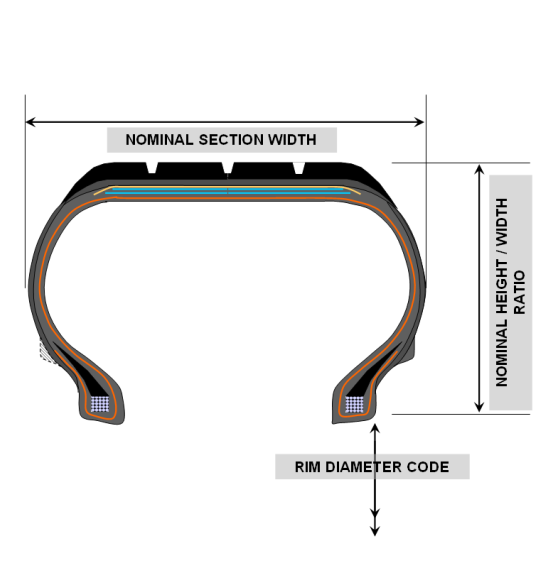
A two- or three-digit code reflecting the maximum load-carrying capacity of the tyre. The law requires that tyres fitted to vehicles must be fit for purpose. When replacing tyres on cars or vans, the load index should be at least equal to that specified by the vehicle manufacturer. For heavy commercial vehicles, it is a legal requirement that tyres must be adequate to support the maximum permitted axle weight.
A letter that signifies the maximum safe operating speed of the tyre. UK law only requires that tyres are capable of meeting the national speed limit. However, the Speed Symbol is not only an indicator of the tyre’s maximum speed capability, but also of its suitability for use on high-performance vehicles. In most other European countries, the speed symbol of replacement tyres must by law be at least equal to that of the original equipment tyres.
The Service Description of a tyre is its Load Index plus Speed Symbol. For example
205/55 R16 91V
In this example the “91” is the Load Index and corresponds to a maximum load for the tyre of 615 kg. The “V” in this example is the tyre’s “Speed Symbol” indicating its maximum speed of 150 mph.
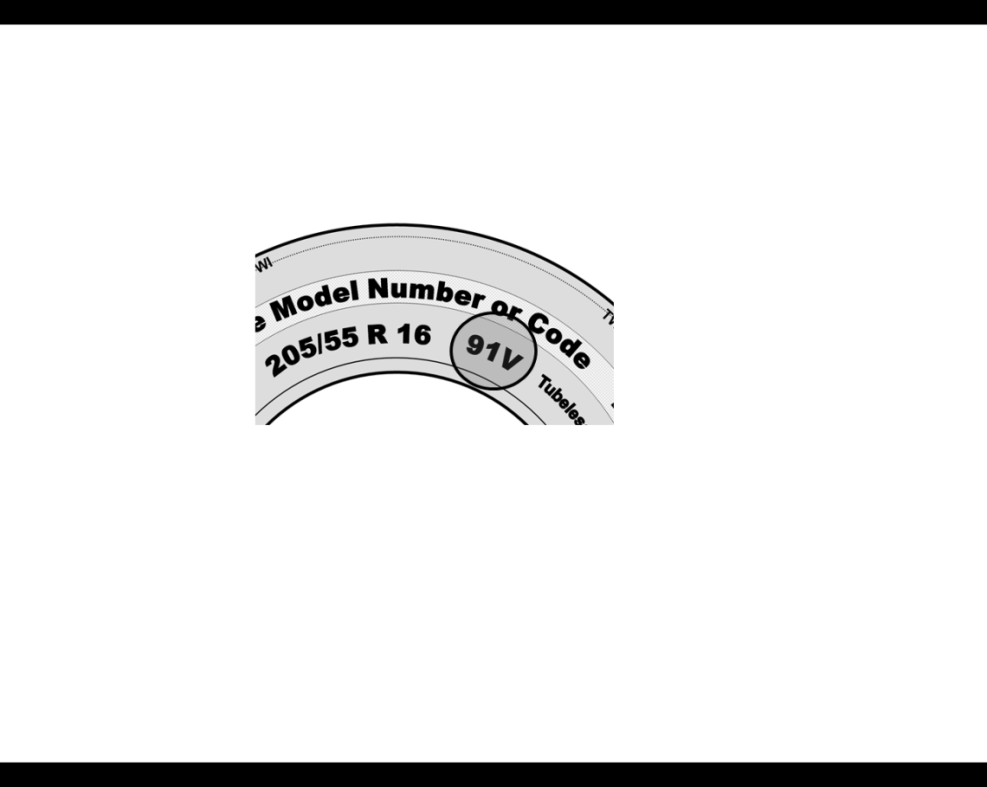
A directional tyre is a tyre that the manufacturer recommends to be used in one direction of rotation. The fitting of a directional tyre in the opposite direction does not constitute an unsafe condition. Although the tyre is then not fitted as recommended, overall performance and handling will not be compromised. Nevertheless, the use of a directional tyre in the opposite direction should be discouraged and should be considered as a temporary measure only. Continued use of a directional tyre in the opposite direction may lead to uneven tyre wear and/or increased interior noise and increased vibration levels.
NB In the case of a vehicle equipped with a spare wheel fitted with a directional tyre, the spare wheel will run in the recommended direction only when fitted on one side of the vehicle. If the spare wheel is fitted on the other side of the vehicle, the correct direction of rotation should be restored by refitting the tyre on the rim at the earliest opportunity.
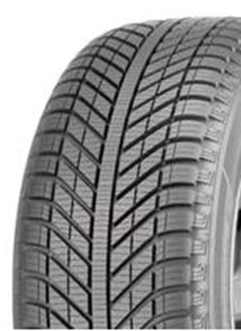
An asymmetric tyre has a tread pattern which differs on its inner side to that of the outer side and offers handling and cornering advantages over other tread patterns. Most car tyres for summer use have asymmetric tread patterns.
Unlike directional tyres, an asymmetric tyre once fitted correctly to the wheel will give optimum performance when fitted on either side of the vehicle. Tyre sidewalls are marked “outside” and “inside” or other similar wording indicating the correct fitment.
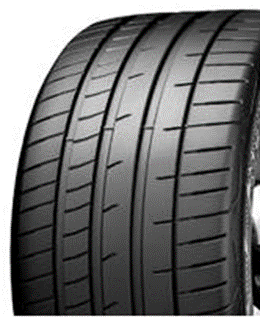
Self-Supporting Tyres (SSTs), also known as “Run flat” tyres, have specially reinforced sidewalls to enable them to perform when deflated for a limited distance and at a restricted speed. The distance permitted under these conditions may vary according to the tyre or vehicle manufacturer concerned. The driver can continue travelling without needing to stop to repair or replace the deflated tyre until a safe place can be found to do so. However, it is advisable to repair/replace the tyre at the earliest possible opportunity, rather than running the tyre to its limit.
It is important to note that regular inflation pressure checking and maintenance is just as important with an SST tyre as it is with a standard tyre. SST tyres should not be mixed with standard tyres on the same vehicle.
Historically, tyres offering improved winter mobility have been marked “M + S”. This reflected the manufacturer’s assessment that the tyre had better performance on snow when compared to a tyre without the marking. More recently the “Three peak mountain snowflake” (3PMSF) or “Alpine symbol” has been introduced. This identifies that the tyre meets an objective performance standard contributing to improved winter mobility.
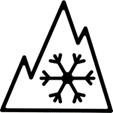
Tyres with the Alpine symbol marking are increasingly the choice of professionals who recognise the value of reliable winter mobility including the emergency services, utility companies and supermarket home deliveries.
Some European countries have legal requirements regarding tyre winter capabilities. If you are taking your vehicle outside the UK during the winter season you should check the requirements of the countries that you are visiting. Up to date information can be found on the websites of motoring organisations and some tyre manufacturers.
Specific tyres homologated for a particular vehicle (and marked accordingly). This occurs in the main for performance/prestigious vehicles such as Porsche, Chrysler, Ferrari, Mercedes AMG, Audi, Bentley, BMW and others.
